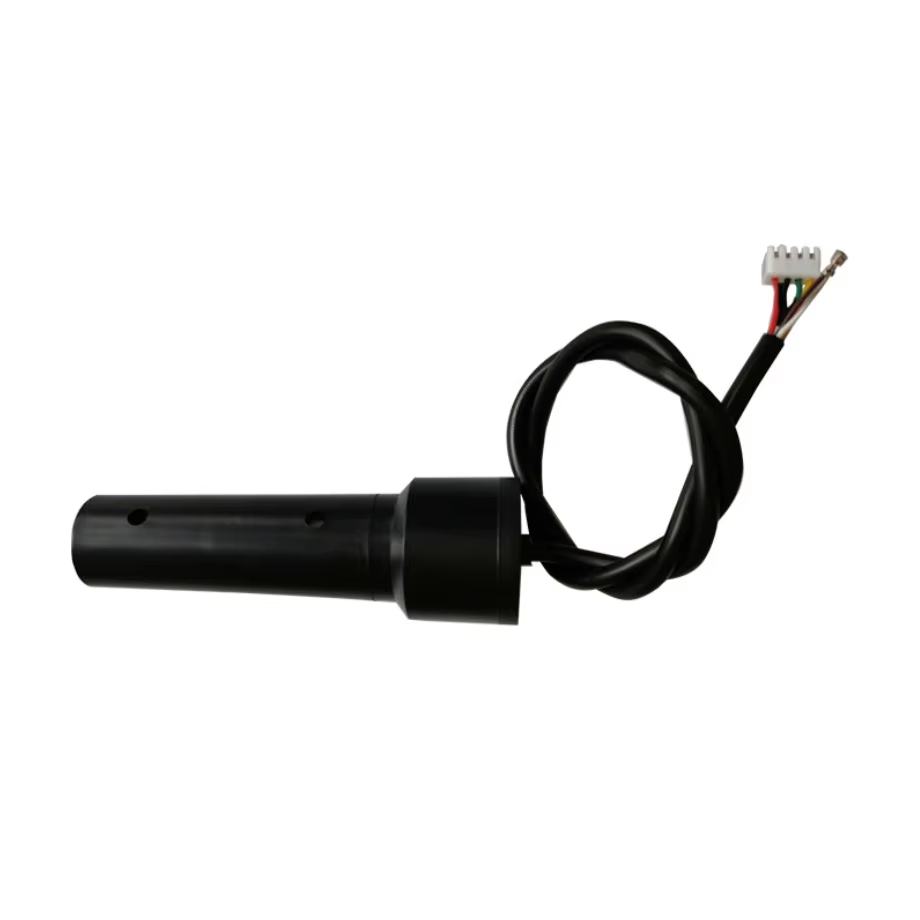Ба наздикӣ, сенсори CO₂-и дараҷаи 6000-метрии обшуда дар дарё, ки аз ҷониби гурӯҳи тадқиқотии Гэн Сюҳуй ва Гуан Яфэн дар Донишкадаи физикаи химиявии Даляни Академияи илмҳои Чин таҳия шудааст, озмоишҳои бомуваффақияти баҳриро дар минтақаҳои сарди баҳри Чини Ҷанубӣ анҷом доданд. Сенсор ба умқи максималии 4,377 метр расид ва бори аввал тасдиқи мутобиқати маълумотро бо сенсорҳои воридотӣ ба даст овард. Ин пешрафт маънои ворид шудани Чинро ба сафи пеши байналмилалии мониторинги гардиши карбон дар баҳр, таъмин кардани дастгирии муҳими технологӣ барои таҳқиқоти ҷаҳонии ғарқшавии карбон дар уқёнус дорад.
Пешрафтҳои технологӣ: муқовимат ба фишори баланд, дақиқии баланд, калибрченкунӣ дар вақти воқеӣ
Даста мушкилоти асосиро аз қабили модули мембранаи ҷудокунандаи 75МПа фишори баланди об ва газ, роҳи дарози оптикии ҳамгирокунандаи зонд ва технологияи худтанзимкуниро дар ҷои худ паси сар карда, ба сенсор имкон дод, ки дар муҳити шадиди баҳрӣ мӯътадил кор кунад ва аномалияҳои CO₂-ро дар минтақаҳои ҷазоби сард дақиқ сабт кунад. Дар муқоиса бо таҳлили анъанавии лабораторӣ, ин технология ба мониторинги доимӣ, дар вақти воқеӣ ноил шуда, саривақтӣ ва дақиқии маълумотро ба таври назаррас беҳтар мекунад.
Сенарияҳои татбиқ: Аз хунукии амиқ дар баҳр то баҳисобгирии глобалии карбон
- Тадқиқоти сикли карбон дар уқёнус: Сенсорро метавон дар AUV (мошинҳои мустақили зериобӣ), планерҳо ва дигар платформаҳо барои мониторинги дарозмуддати ҷараёни CO₂ дар чуқури баҳр ҷойгир кард, ки ба равшан кардани механизмҳои ғарқшавии карбон дар уқёнус кӯмак мекунад.
- Ҷустуҷӯи захираҳо ва ҳифзи экологӣ: Дар экосистемаҳои махсус, ба монанди ҷараёнҳои хунук ва вентилятсияи гидротермалӣ, мониторинги якҷояи CO₂ ва метан дастгирии маълумотро барои коркарди гидратҳои газ ва арзёбии экологӣ таъмин мекунад.
- Идоракунии иқлим ва ҳамкории байналмилалӣ: Маълумотро метавон ба шабакаҳои глобалии мушоҳидаи карбон (масалан, базаи SOCAT NOAA) ворид кард, ки барои ҳадафҳои коҳиши партовҳои Созишномаи Париж дастгирии илмӣ пешниҳод мекунад.
Тамоюлҳои саноат: Рушди бозор ва ҳамгироии технологӣ
Интизор меравад, ки бозори ҷаҳонии асбобҳои CO₂ бо 4,3% CAGR афзоиш ёбад ва то соли 2033 ба 927 миллион доллар мерасад. Дар ҳамин ҳол, алгоритмҳои AI ва ҳамгироии IoT такмили иктишофии сенсорҳоро пеш мебаранд, ба монанди:
- Сенсорҳои оптикии CO₂-и ширкати Hamilton, ки дорои тарҳи бе электролит барои кам кардани хароҷоти нигоҳдорӣ мебошанд, аллакай дар мониторинги вақти воқеии биофармацевтикӣ истифода мешаванд.
- Технологияи DOC (Direct Ocean Carbon Capture), ки ба ҳассосияти баланди CO₂ такя мекунад, аз ҷониби стартапҳо ба монанди Captura таҳия карда мешавад (ҳадафи солонаи 1000 тонна карбон), ки маълумоти воқеии карбон дар оби баҳрро талаб мекунад.
Дурнамои оянда
Бо афзоиши талабот ба иктишофи чуқури баҳр ва технологияҳои бетараф карбон, сенсорҳои мустақили Чин омодаанд дар таҳқиқоти илмии чуқури баҳр ва иқтисоди кабуди карбон нақши калидӣ бозанд. Қадами навбатӣ миниатюризатсия ва кам кардани арзиши сенсорҳоро барои барномаҳои васеътари тиҷоратӣ дар бар мегирад.
Мо инчунин метавонем ҳалли гуногунро пешниҳод кунем
1. Ҳисобкунаки дастӣ барои сифати бисёрпараметри об
2. Системаи шинокунандаи Buoy барои сифати бисёр параметрҳои об
3. Чӯткаи тозакунии худкор барои санҷандаҳои бисёрпараметрии об
4. Маҷмӯи пурраи серверҳо ва модули бесими нармафзор, RS485 GPRS /4g/WIFI/LORA/LORAWAN -ро дастгирӣ мекунад
Лутфан бо Honde Technology Co., LTD тамос гиред.
Email: info@hondetech.com
Вебсайти ширкат:www.hondetechco.com
Тел: +86-15210548582
Вақти фиристодан: июл-08-2025


